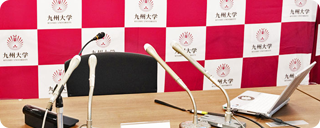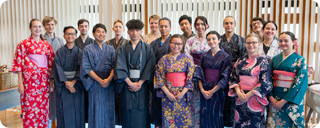研究成果 Research Results
- TOP
- News
- Research Results
- Charting super-colorful brain wiring using an AI's super-human eye
Charting super-colorful brain wiring using an AI's super-human eye
Researchers develop QDyeFinder, an AI pipeline capable of untangling and reconstructing the brain’s dense neuronal networksProfessor Takeshi Imai
Faculty of Medical Sciences
2024.06.25Research ResultsLife & HealthTechnology
Vid.1.Mouse cortical layer 2/3 pyramidal neurons were labeled with 7-color Tetbow. A combination of 7 fluorescent proteins (mTagBFP2, mTurquoise2, mAmetrine1.1, mNeonGreen, Ypet, mRuby3, tdKatushka2) was used to visualize the dense wiring of neurons. The 7-channel images were then analyzed by the QDyeFinder program to reveal the wiring patterns of individual neurons. (Kyushu University/Imai Lab)
Fukuoka, Japan—The brain is the most complex organ ever created. Its functions are supported by a network of tens of billions of densely packed neurons, with trillions of connections exchanging information and performing calculations. Trying to understand the complexity of the brain can be dizzying. Nevertheless, if we ever hope to understand how the brain works, we need to be able to map neurons and study how they are wired.
Now, publishing in Nature Communications, researchers from Kyushu University have developed a new AI tool, which they call QDyeFinder, that can automatically identify and reconstruct individual neurons from images of the mouse brain. The process involves tagging neurons with a super-multicolor labeling protocol, and then letting the AI automatically identify the neuron’s structure by matching similar color combinations.
“One of the biggest challenges in neuroscience is trying to map the brain and its connections. However, because neurons are so densely packed, it’s very difficult and time-consuming to distinguish neurons with their axons and dendrites—the extensions that send and receive information from other neurons—from each other,” explains Professor Takeshi Imai of the Graduate School of Medical Sciences, who led the study. “To put it into perspective axons and dendrites are only about a micrometer thick, that’s 100 times thinner than a standard strand of human hair, and the space between them is smaller.”
One strategy for identifying neurons is to tag the cell with a fluorescent protein of a specific color. Researchers could then trace that color and reconstruct the neuron and its axons. By expanding the range of colors, more neurons could be traced at once. In 2018, Imai and his team developed Tetbow, a system that could brightly color neurons with the three primary colors of light.
Fig. 1. Super-multicolor labelling of neuronal circuits with seven fluorescent proteins. Mouse cortical layer 2/3 pyramidal neurons were labeled with 7-color Tetbow. A combination of 7 fluorescent proteins (mTagBFP2, mTurquoise2, mAmetrine1.1, mNeonGreen, Ypet, mRuby3, tdKatushka2) was used to visualize the dense wiring of neurons. The 7-channel images were then analyzed by the QDyeFinder program to reveal the wiring patterns of individual neurons. (Kyushu University/Imai Lab)
“An example I like to use is the map of the Tokyo subway lines. The system spans 13 lines, 286 stations, and across over 300 km. On the subway map each line is color-coded, so you can easily identify which stations are connected,” explains Marcus N. Leiwe one of the first authors of the paper and Assistant Professor at the time. “Tetbow made tracing neurons and finding their connections much easier.”
However, two major issues remained. Neurons still had to be meticulously traced by hand, and using only three colors was not enough to decern a larger population of neurons.
The team worked to scale up the number of colors from three to seven, but the bigger problem then was the limits of human color perception. Look closely at any TV screen and you will see that the pixels are made up of three colors: blue, green, and red. Any color we can perceive is a combination of those three colors, as we have blue, green, and red sensors in our eyes.
“Machines on the other hand don’t have such limitations. Therefore, we worked on developing a tool that could automatically distinguish these vast color combinations,”
Fig. 2. Illustrating the Tokyo subway line to highlight the concept of super-multicolour fluorescence imaging. This is a map of the Tokyo Metro line with each line shown by the combination of 1-3 colours. Multicolour labelling facilitates the identification of different lines. (Kyushu University/Imai Lab)
###
For more information about this research, see “Automated neuronal reconstruction with super-multicolour Tetbow labelling and threshold-based clustering of colour hues" Marcus N. Leiwe, Satoshi Fujimoto, Toshikazu Baba1, Daichi Moriyasu, Biswanath Saha, Richi Sakaguchi, Shigenori Inagaki, and Takeshi Imai Nature Communications, https://doi.org/10.1038/s41467-024-49455-y
Research-related inquiries
Takeshi Imai, Professor
Department of Basic Medicine, Faculty of Medical Sciences
Contact information can also be found in the full release.
- TOP
- News
- Research Results
- Charting super-colorful brain wiring using an AI's super-human eye































